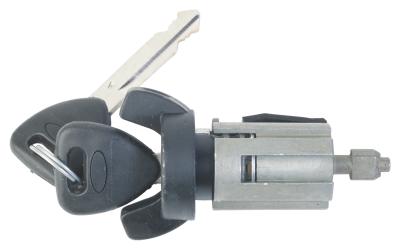
From the Stone Age distributor and points to the modern-day distributorless ignition, the automotive ignition system has undergone many changes over the ages. Despite the mechanical and technological changes through the years, the basic function of the ignition system has remained basically the same; take the voltage from the battery, convert it to higher voltage, then ship this electric current to the combustion chamber in time to ignite the compressed fuel and air.
Mechanical ignition systems are comprised primarily of the ignition switch, the ignition coil, spark plugs and the distributor. When a key is inserted into the ignition switch and turned to the “start” position, the switch temporarily draws the full voltage of the battery to the starter, which uses the voltage to initially fire the engine. Once the key is released, the switch automatically springs back to the “on” position and the battery’s energy is redirected to the ignition coil. The ignition coil is an electro-magnetic transformer consisting of a soft iron core wrapped in a primary circuit of hundreds of turns of heavy copper wire and a secondary circuit of thousands of turns of fine copper wire. Current entering the coil is intensified by the magnetic field between the wires and the core. It is then routed through the distributor via contact with ignition points on the distributor. The distributor rotates on a shaft driven by the engine’s camshaft. As the distributor rotates, the ignition points ground the ignition coil at intervals based on the speed of the engine. The faster the engine camshaft rotates, the faster the distributor rotates and the more frequently the current fluctuates in the ignition coil. When a new charge enters the distributor, the distributor briefly stores the charge and then routes it to the next spark plug in the firing sequence. The spark plug then creates a spark that arcs into the engine cylinder, causing another ignition in the engine and perpetuating the cycle.
Electronic ignition systems are similar to mechanical ignition systems except that they use electronic timing devices instead of ignition points. An electronic control module separate from the distributor guides the flow of current in the ignition coil primary circuit. In some electronic ignition systems the control module is prompted by an armature or magnet that rotates in the distributor and sends a signal to the module. In others the module acts independently from the distributor and relies on sensors connected to the camshaft or engine.
Distributorless ignition systems rely on a vehicle’s internal computer instead of a distributor. They have multiple ignition coils -- either one coil for every two spark plugs or one coil per spark plug. The vehicle’s computer system, with the aid of engine sensors, regulates the electronic control module and directs the ignition coils to fire the spark plugs.